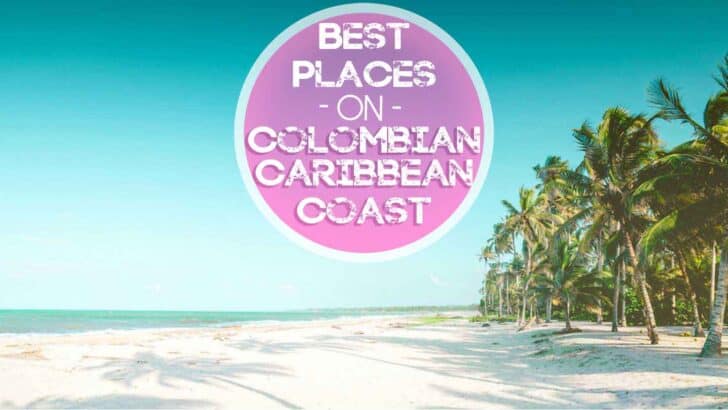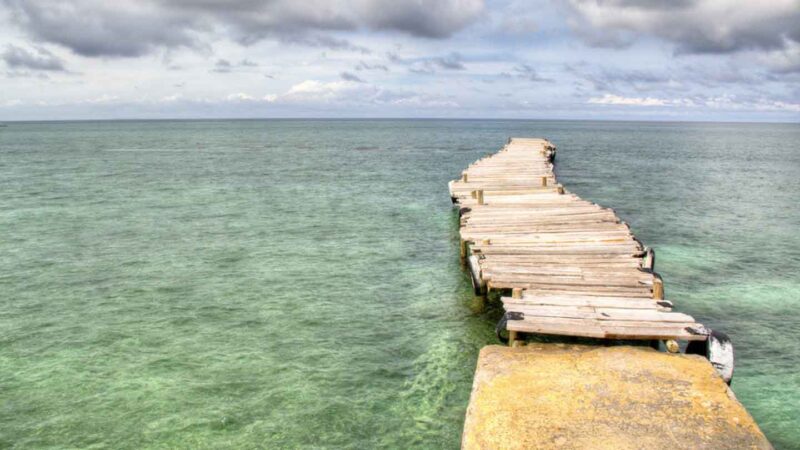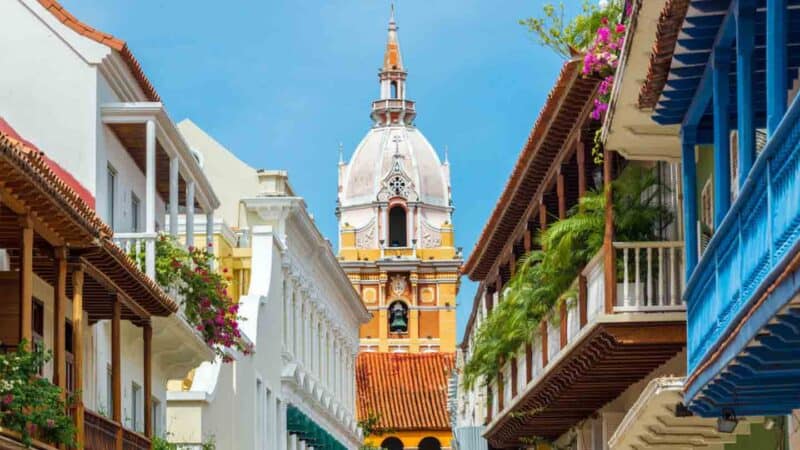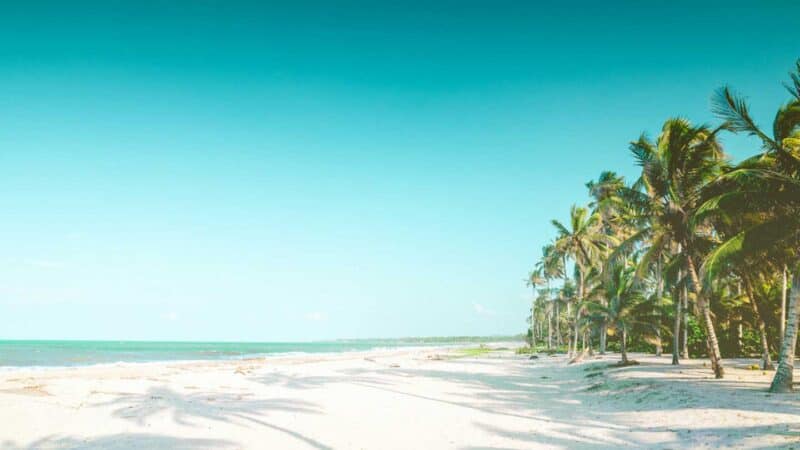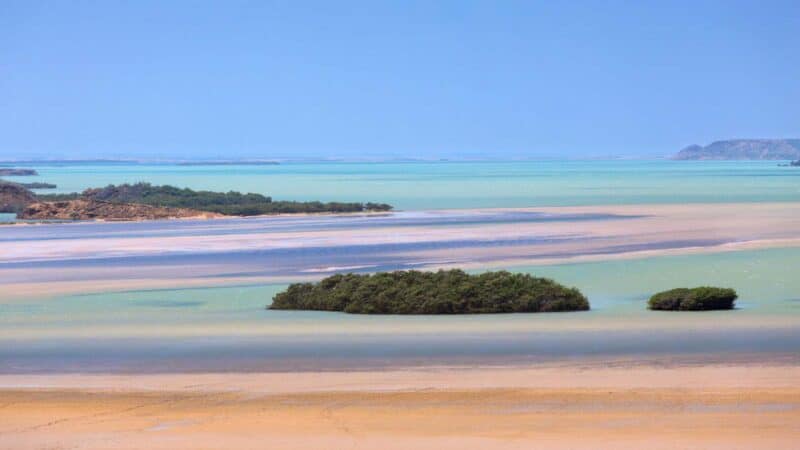Because of its bloody past, Colombia has the reputation of being a dangerous country, full of Narcos and Paramilitaries. And getting rid of unpopular notoriety is hard. But things are progressively changing thanks to travelers who spread the word around them. Colombia is much more than Cocaine and FARC. It’s a country with incredible landscapes and Colombians are the most friendly people I’ve ever met in my life.
The Caribbean Coast is the first region that showed the beauty of Colombia to the world with the golden walls of the old city center in Cartagena, the sultry Bachata movements in small bars, and the white sandy beaches of Rosario islands, and the green maze of Tayrona National Park.
But did you know the Caribbean Coast has a lot more to offer? The region could easily deserve a 3-weeks itinerary. And today, I want to share with you the best places to visit on the Caribbean Coast in Colombia. Let’s travel from West to East.
*When looking for the best price and biggest selection of hotels check prices on Booking.com, we’ve found they are the best option and have a great cancelation policy.*
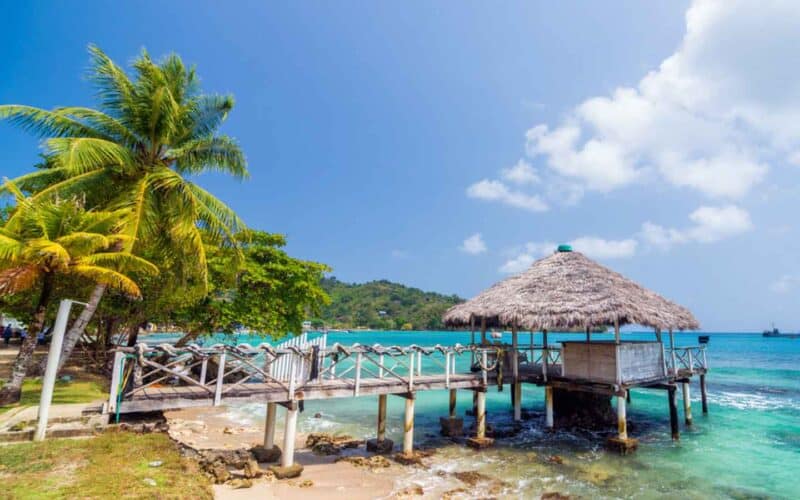
Capurgana and Sapzurro
Have you heard about the Darien Gap? If you check out the area on the government’s websites, you will probably see a bloody red color and a forbidden sign.
And it’s true that I wouldn’t recommend you to wander alone in the jungle. Spiders, snakes, and paramilitaries. They are not the friends you want to play cards with.
But there are two towns on the Caribbean coast in Colombia, only accessible by boat or plane, that Colombians love. Capurgana and Sapzurro are two peaceful places where the time seems to stop. I lived there for many months when I was backpacking in Colombia. I’ve never felt unsafe.
On the main square, kids play football between dogs and a horse looking for the last pieces of grass. Behind, the bakery welcomes the clients with warm loaves of bread. The groceries sell the few vegetables available and the products brought over from the mainland.
In the streets, restaurants serve fresh fish and coconut rice. The inhabitants sit on plastic chairs to play dominos, hitting the table loudly after each move. Others listen to Vallenato songs, a cold beer in their hand and their t-shirt rolled up on their stomach.
Capurgana and Sapzurro are perfect examples of Caribbean life.
Take the time, don’t rush to different activities, and enjoy the present. There is no car or moto. The only two options are to walk or to wait for a speedboat on the dock to explore the beaches around, the natural fresh pools, and the cool diving spots. If you have a travel drone this would be a great spot for some aerial footage.
Capurgana Budget:
- Taxi Speedboat to Capurgana: 10,000 COP
- Yacht from Necocli – Capurgana: 70,000 COP / takes 90 minutes
- An average night in a dorm: 30,000 COP
Isla Fuerte
In the past, Isla Fuerte was a hiding place for pirates and narcos. Even today, only a few people are aware of its existence on the Caribbean Coast of Colombia. From Paso Nuevo, speedboats leave after lunch to bring visitors, locals, and mountains of chips and beers. And after a quick 30 min boat drive, they berth in the little town established in the South of the island.
Locals load the commodities on donkeys before leading them to the different paths cutting across Isla Fuerte. The legend says that donkeys usually bray at the exact time of their birth. I guess it’s right once a day.
On the right, La Playita is a famous hostel welcoming backpackers. Cabanas made of wood are scattered among palm trees, and the few tables along the coast allow the visitors to savor their breakfast in front of the ocean. At night, the lights around the outdoor bar bring a friendly atmosphere to the scenery.
Isla Fuerte is well-known for its unique trees like the “walking tree.” Its branches sink into the ground and take roots around him. Follow the different paths leading to hidden beaches, ask a local to drive you around the island with his boat, and book an incredible dive to the Bushnell reef.
Isla Fuerte Budget:
Boat Drive Paso Nuevo – Isla Fuerte: 15,000 COP / 30 min
Night in a dorm in La Playita: 45,000 COP
2 Dives to Bushnell Reef: 330,000 COP
The Archipelago of San Bernardo
The San Bernardo islands, located 1 hour away from the Caribbean Coast of Colombia, are a piece of heaven made of mangroves, sands, and palm trees. At dusk, a cool breeze refreshes the tanned skin of the rare travelers while the sun goes down in the ocean, with the colors of the sunset reflecting on the waves. It gives a great feeling of fullness.
Only a few tourists realize they can spend the nights on the islands. Therefore, you have the beach for yourself most of the time. Isla Mucura offers the best options for accommodations. Backpackers choose the hammocks while lovers enjoy their honeymoon in the luxury hotel Punta Faro.
Another option is to sleep in Casa En El Agua, a house surrounded by water. Travelers listen to techno music, their butts stuck in inflatable buoys while drinking their Margarita.
On Isla Tintipan, there is the most beautiful beach in the Archipelago de San Bernardo. Tours usually like to drop their clients there for lunch.
In front, Islote de Santa Cruz hosts more than 1,400 inhabitants. With the highest density population island in the world, there is not a single-meter square available on this tiny artificial island.
The archipelago of San Bernardo Budget
- Boat from Tolu – Isla Mucura: 40-50,000 COP / 1h30
- Boat from Rincon – Isla Mucura: 100 – 150,000 COP (Max 6 pers) / 1 hour
- Hammock in Isla Mucura: 35,000 COP
- Hammock in Casa En El Agua the coolest hostel in the world in the middle of the ocean: 70,000 COP
- 1 Night in Punta Faro hotel: 900,000+ COP
Cartagena de Indias
Cartagena de Indias attracts many visitors every year. Massive yellow walls surround the old city center, and travelers like to sit on them to appreciate the view and the sunset. Inside, no cars are allowed. Foreigners wonder on the cobblestone streets, between impressive churches, luxury restaurants, and flourishing balconies. Large wood doors hide private courtyards of bright colorful buildings, and street sellers speak 6-7 languages to convince visitors to buy a hat.
Near the old city center, there are the two other famous districts of Cartagena de Indias. In Boca Grande, huge buildings welcome the wealthy Colombians and American tourists. Backpackers looking for cheaper options in the district of Getsemani. At night, Trinidad square is the meeting point for fantastic dancers and bands to perform while travelers drink beers from the shops and taste the different street foods.
Because the beaches around Cartagena are without interest, many tours offer to visit the Rosario Islands, located 1 hour away. The white sandy beach of Isla Baru can quickly be overcrowded during the weekends. To fully appreciate the islands, you should spend 1 or 2 nights on Isla Grande and buy your boat ticket at the dock.
Cartagena de Indias FAQ:
Delicious Ceviche: 35,000 COP
Night in a dorm in the old city center: 45,000 COP
Boat to Isla Grande (1 way): 40,000 COP / 1 hour
Night in a dorm on Isla Grande: 60,000 COP
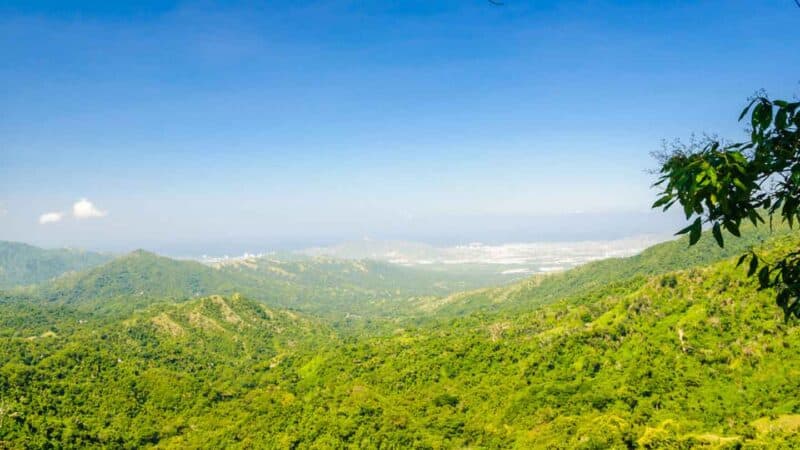
Minca
From Santa Marta, jeeps only leave the Calle 11 con Carrera 12 when there is no more seat available. In 30 minutes, the passengers say goodbye to the busy streets of the city and hello to the blue of the Caribbean Sea to venture into a new environment.
Minca is a little town in the Sierra Nevada. The lush vegetation hosts hundreds of different species of birds and El Dorado is a fantastic Eco lodge for bird lovers. Minca isn’t a lovely village. But within a few years, excellent hostels have been built to welcome visitors. They offer healthy and vegetarian food, yoga, or permaculture lessons. Moreover, they usually have a great view above the valley, where you can sight Santa Marta and the sparkle of the ocean.
From town, accessible trails lead the travelers to the waterfalls, the coffee plantations, or the different hostels around. And for saving time, moto-taxis are always ready to drive them anywhere for a few thousand pesos.
Minca FAQ:
- Jeep from Santa Marta to Minca: 8,000 COP / 40 minutes
- Moto Taxi: Around 7,000 COP
- Hotels in Minca: 30,000+ COP check rates here
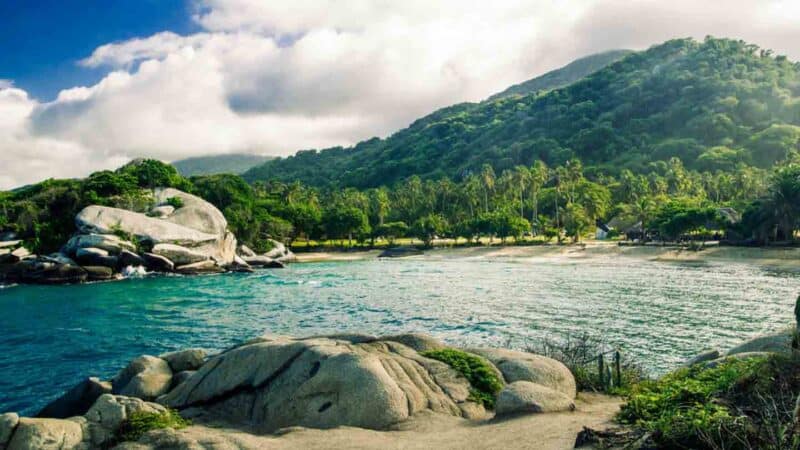
Tayrona National Park
With an area of 150 km square, three entrances, tens of kilometers of trails, and many beaches, Tayrona National Park is one of the favorite highlights on the Caribbean Coast of Colombia.
Once the security checkpoint has been passed, visitors are free to wander anywhere, following the different indications on the trees. Some travelers are brave and decide to hike through the park. Others are lazy and choose to pay for a horse.
But they all head in the same direction, the astonishing beaches of Tayrona. Massive boulders protect the area from the strong currents, and palm trees offer significant protection against the sun, especially on the white sandy beaches. Because they attract more and more people, you should avoid going during the weekends and holiday periods.
Along the coast, a few restaurants offer meals and hammocks to welcome visitors who stay more than one day in the National Park (strongly recommended). Tayrona hosts many animals like monkeys, iguanas, caimans, and even jaguars. To maximize your chance to spot them, start the hike early from the Calabazo entrance, and don’t forget to look up!
Tayrona National Park FAQ:
Tayrona National Park entrance fee: 43,000 COP
Hammock in Cabo San Juan: 25,000 COP
Bus from Santa Marta to Tayrona National Park: 7,000 COP / 1 hour
Cost of a meal in Tayrona National Park: Around 25,000 COP
Palomino
Palomino is a beach town on the Caribbean Coast of Colombia, located 1 hour away from the Tayrona National Park. From the main road, a dirt path of 1 km leads to the beach. Moto-taxis patiently wait for the travelers to get off the bus. They load the big backpacks between their arms on the handlebar and drive expertly between potholes. On both sides of the road, hostels, and restaurants display colorful signs to catch the attention of the new visitors.
Life is simple in Palomino. During the day, backpackers go tubing for 2 hours with a bag full of cold beers. The river slaloms among dense vegetation and birds enjoy the coldness of the water. The activity ends directly in the ocean. Then the tomatoes travelers, burnt by the sun, have to walk back to their hostel with the inner tube.
At night, bonfires are occasionally set up on the beach, and backpackers share beers, stories, and songs. On weekends, a few hostels organize friendly parties, and the power cuts add romantic moments and opportunities to speak without screaming.
Related Article: Best Beaches in Belize
Palomino FAQ:
- Bus from Santa Marta to Palomino: 9,000 COP / 2 hours
- Tubing down the river: 20,000 COP
- Night in a dorm: from 25,000 COP
Cabo de la Vela and Punta Gallinas
La Guajira, located on the Caribbean coast of Colombia, is the largest desert in the country. From Rioacha or Uribia, jeeps pick up foods, water, locals, and tourists to drive them to Cabo de la Vela. There are no roads or signs to indicate the right direction. Drivers only use their memories and the landscape. As Paulo Coelho says, the desert speaks to everyone, but only a few know how to listen.
Cabo de la Vela is a well-known town by the kitesurfer community. The wind blows every day of the year, and the sea is as flat as a lake. In the desert, fresh water is a scarce resource and visitors learn to use it with parsimony. Therefore, the best method to take a shower is to use the bucket.
In town, tours offer a 2-days trip to Punta Gallina, the northernmost point of South America. Through the trip, travelers discover astonishing sceneries like colorful lagoons, massive dunes, and unforgettable sunsets. At night, the stars and the moon progressively appear in the sky and enlighten the camp. It’s time to listen to the silence of the desert.
Punta Gallinas FAQ:
- 2-days trip to Punta Gallinas: 125,000 COP (transport only)
- Uribia – Cabo de la Vela: 20, 000 COP / 2.5 hours
- Hammock in Cabo de la Vela: 10,000 COP
- Hammock in Punta Gallinas: 15,000 COP
- Meals in Punta Gallinas cost: 15,000 COP
Have you been to any of the above places on the Colombia Caribbean Coast? What were your favorites?
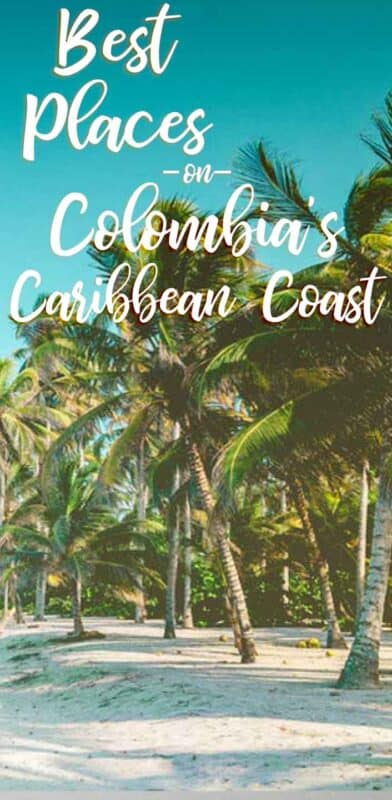
Author Bio:
During his globetrotting trip, Thomas fell head over heels for Colombia and quickly realized that lots of the information about the country is either missing or not quite accurate for us travelers. Thomas then started his epic blog, Tomplanmytrip to help all travelers to discover the secrets of Colombia.
